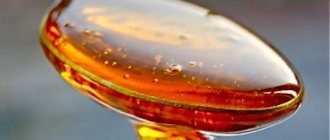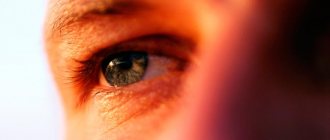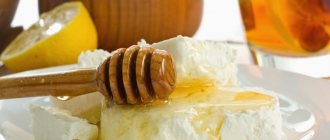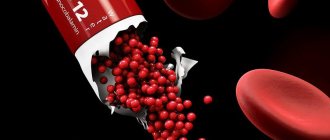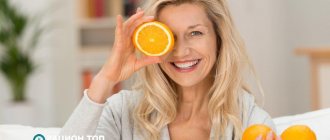History of the discovery of vitamin B2
The pigment substance, which later became known as riboflavin, was first discovered by the English chemist Alexander Wynter Blyth in 1872 while studying milk using the fluorescence method [1]. He noticed a certain yellow pigment in the chemical composition of milk. Blythe named this substance lactoflavin (or lactochrome) - from the Latin “lac, lacto” (milk) and “flavinus” (yellow). But due to the insufficient development of science, the scientist could not determine the chemical structure of this compound. Therefore, for a long time, the scientific community did not attach much importance to the observation of Alexander Blight.
Only half a century later, the discovery of thiamine (as a result of research into beriberi disease) contributed to spurring the interest of biochemists in vitamins as additional and vital nutritional factors. Scientists understood that there were several similar compounds in nature that had yet to be discovered. But, unlike thiamine, riboflavin deficiency is not accompanied by clear specific symptoms. That is why its study was somewhat difficult.
Research on laboratory mice conducted by Frederick Gowland Hopkins and Elmer McCollum at the turn of the 19th and 20th centuries. showed the enormous influence of diet as a source of vitamins. These studies formed the basis for the discovery of vitamins, D, E and B vitamins [2,3]. A huge amount of work was done by Joseph Goldberger, who studied pellagra in the southern states of the United States. Thanks to his work, the scientific community has come close to unraveling the chemical structure of vitamin B2.
Riboflavin deficiency does not directly lead to the development of pellagra. However, hypovitaminosis B2 inhibits the activation of some other vitamins, for example, PP (nicotinic acid). It is vitamin deficiency that is one of the reasons for the development of this pathology, manifested by dermatitis, dementia and diarrhea.
In the period 1932-1935. Swiss organic chemist, mathematician and biochemist Paul Karrer, as well as German chemist and biochemist Richard Johann Kuhn, independently described the chemical structure of the riboflavin molecule [4]. In the course of further scientific research, vitamin B2 was discovered in chicken eggs (the substance was called ovoflavin ) and in the liver ( hepatoflavin ), as well as many other products. Research on lactoflavin, ovoflavin and hepatoflavin by Kurt Günter Stern, Richard Kuhn and Paul Karrer showed that they are all almost identical and contain ribose (a carbohydrate) as a radical. Therefore, in 1937, the Board of Pharmacy and Chemistry of the American Medical Association decided to generalize all forms of vitamin B2 into one term - riboflavin [4].
It is important to understand that riboflavin combines many different forms of vitamin B2 and they are all found in different foods. This indicates that riboflavin-based medications cannot fully replace human food sources of vitamin B2.
In 1939, American doctors William Henry Sebrell, Roy Edwin Butler and Robert S. Harris showed the enormous importance of vitamin B2 for the human body[5].
Amount of Vitamin B2 in Some Foods
| Products | Content (mg/100g) | Products | Content (mg/100g) | Products | Content (mg/100g) |
| Apricots | 0,06 | Corn | 0,10 | Heart | 1,80 |
| Oranges | 0,03 | Green onion | 0,10 | Tomato juice | 0,03 |
| Peanut | 0,13 | Bulb onions | 0,02 | Cream | 0,14 |
| Watermelon | 0,03 | Margarine | 0,02 | Dried cream | 0,16 |
| Eggplant | 0,05 | Butter | 0,12 | Sour cream | 0,14 |
| Mutton | 0,26 | Pasta, V.S. | 0,04 | Sausages | 0,16 |
| Beans (soy) | 0,31 | Mayonnaise | 0,08 | Asparagus | 0,22 — 0,24 |
| Brynza | 0,12 | Almond | 0,67 | Horse mackerel | 0,12 |
| Grape | 0,02-0,08 | Brain | 0,17 | Serum from oil | 0,18 |
| Beef | 0,29 | Condensed milk | 0,38 | Fatty, salty cheese | 0,40 — 0,75 |
| Canned beef | 0,22 | Skimmed milk powder. | 1,80 | Low-fat cottage cheese | 0,31 |
| Fresh green peas | 0,16 | Carrot | 0,07 | Veal | 0,20 |
| Dried peas | 0,28 | Wheat flour, 1 s. | 0,08 | Tomato paste | 0,17 |
| Grapefruits | 0,03 | Rye flour | 0,22 | Cod | 0,16 |
| Fresh porcini mushrooms | 0,30 | cucumbers | 0,04 | Pumpkin | 0,06 |
| Pears | 0,03 | Dandelion | 0,14 | Dry dates | 0,10 |
| Brewer's yeast | 5,54 | Bran | 0,39 | Hazelnut | 0,10 |
| Melon | 0,04 | Bran pomace | 0,23 | Wheat grain bread | 0,10 |
| Garden strawberries | 0,05 | Walnuts, cashews | 0,13 | Rye bread with bran | 0,18 |
| Figs | 0,12 | Sweet green pepper | 0,10 | Black bread | 0,12 |
| Cocoa powder | 0,30 | Sweet red pepper | 0,08 | Chick | 0,16 |
| Boiled cauliflower | 0,23 | Peaches | 0,08 | Tea | 1,0 |
| Potato | 0,07 | Dried peaches | 0,20 | Garlic | 0,08 |
| Semi-smoked sausage | 0,20 | Fresh parsley | 0,28 | Dry lentils | 0,29 |
| Boiled sausage | 0,16 | Cookies, crackers | 0,05 | Bitter chocolate | 0,24 |
| Canned fish | 0,17 | Beef liver | 3,96 | Chocolate with almonds | 0,51 |
| Coffee beans | 0,20 | Cod liver | 0,41 | Spinach | 0,25-0,38 |
| Watercress | 0,17 | Tomatoes | 0,04 | Apples | 0,03 |
| Groats "Hercules" | 0,10 | Kidneys | 1,80 | Egg powder | 1,06 |
| Buckwheat | 0,20 | Curdled milk | 0,13 | One egg (yolk) | 0,06 |
| Semolina | 0,04 | Wheat (shoots) | 0,80 | Whole egg (54 g) | 0,14 |
| Oatmeal | 0,12 | Salad | 0,08 | ||
| Pearl barley | 0,06 | Beet | 0,04 | ||
| Millet groats | 0,04 | Herring | 0,15 — 0,28 | ||
| Rice groats | 0,04 | Radish | 0,04 | ||
| Barley groats | 0,08 | Turnip | 0,41 — 0,46 |
Read also Vitamin deficiency. Causes, symptoms and treatment of vitamin deficiency
You need to know this!
Cottage cheese can be different: the softer it is, the more whey left in it, the more vitamin B2 it contains.
Milk in a glass container exposed to daylight, such as near a window, loses most of the vitamin B2 it contains. In 2 hours in sunlight, milk in transparent bottles loses 50% of riboflavin.
When we cook peas and drain the water, there is no riboflavin left in the finished dish. Always cover the utensils in which you cook food. Otherwise, many vitamins are oxidized. Do not throw away the water in which potatoes were boiled: it is high in riboflavin and other B vitamins. Keep in mind that some vitamin B2 is lost when vegetables are washed in large amounts of water, and some is lost during storage, even in the refrigerator (about 1% per day ). This suggests that there is no need to soak vegetables for a long time and buy them in large quantities.
Important! As we already know, riboflavin is destroyed when exposed to daylight. Based on this, products containing vitamin B2 must be stored in a dark place and never left in the light. Also try to consume such products in their natural form, without heat treatment, and if you have to cook, then do it quickly, under the lid. By the way, you can use a double boiler to cook food with minimal loss of vitamins.
Physicochemical properties of vitamin B2
Riboflavin in its pure form is needle-shaped crystalline formations of yellow or orange color. Bitter taste. It has high solubility in water and aqueous solutions. It is sensitive to the UV spectrum of sunlight and is destroyed under its influence, but is able to quickly restore its original shape. In cells and tissues, vitamin B2 is included in the structure of coenzymes - flavin mononucleotide and flavin adenine dinucleotide, which are the most important components of redox enzymes. They take part in the formation of pyridoxine and folacin, are involved in the oxidation of saturated and unsaturated fatty acids, succinic acid, eliminate the toxicity of aldegins, break down foreign bacterial amino acids, and prevent the oxidation of hemoglobin and glutathione components.
What foods contain vitamin B2?
Food is a natural source of all vitamins, including riboflavin.
Click on the image to enlarge it
The concentration of riboflavin in foods may vary. It all depends on the animal’s nutrition, as well as the weather conditions and the soil in which the plant is grown.
Since riboflavin has an intense yellow color, it is often used in industrial food production as a food coloring and is called E101. Therefore, it is important to understand that not all “E” in foods are harmful to the body. Some of them are very useful.
Signs of excess and deficiency
Even long-term consumption of the vitamin in high doses does not cause harm to the body, since riboflavin is a water-soluble vitamin compound, and its excess is easily excreted through the kidneys. A characteristic change in the color of urine is that it becomes bright yellow, which is explained by the presence of B2 metabolites.
Riboflavin hypovitaminosis, which has typical clinical manifestations, is much more dangerous for the body. It can occur due to insufficient intake of the substance from food, chronic diseases of the digestive system, which are accompanied by malabsorption. The amount of B2 decreases when taking its antagonists: tricyclic antidepressants, barbiturates. When there is a lack of riboflavin, a person experiences the following symptoms:
- dryness and flaking of the skin, seborrheic dermatitis;
- cracks and erosions on the mucous membranes of the oral cavity, “jams” in the corners of the lips;
- feeling of “sand” in the eyes, lacrimation, intolerance to bright light;
- paresthesia, burning pain in the legs.
Long-term ariboflavinosis can lead to dangerous consequences: inflammation of the membranes of the eye, which causes blurred vision; in older people, cataracts sometimes form. Anemia occurs due to impaired production and maturation of red blood cells.
Vitamin B deficiency is a problem of the 21st century (video):
Vitamin B2 during pregnancy
Riboflavin is extremely important for both the expectant mother and the child. Like other representatives of the B-group, it is responsible for the full development of the fetal nervous system. Vitamin B2 is involved in the metabolism of proteins, fats and carbohydrates. Riboflavin is also important for the growth and intrauterine development of a child; it ensures the normal formation and subsequent functioning of the baby’s visual analyzer. Sufficient energy supply, normal hematopoiesis, strong muscles, healthy skin and mucous membranes are also the merit of riboflavin. Among other things, vitamin B2 has a detoxifying effect on all organs and helps quickly remove toxins from the body. Without the participation of riboflavin, the activation of some other vitamins is impossible, for example D (cholecalciferol), B6 (pyridoxine), B9 (folic acid), PP (nicotinic acid), K (phylloquinone). This can lead to false hypovitaminosis, when vitamins are present in sufficient quantities, but due to riboflavin deficiency they cannot perform their biochemical function.
Vitamin B2 – why does the body need it?
Riboflavin is involved as a coenzyme in hundreds of metabolic reactions in all tissues of our body. Its influence on human health is extremely extensive and diverse. Among the most important functions are the following: • regulation and normal metabolism of proteins, fats and carbohydrates; • maintaining the process of hematopoiesis; • preservation of sexual and reproductive activity; • maintaining vision (together with vitamins A, B1, B12, C, E); • moisturizing the skin, strengthening hair and nails; • detoxifying the body and maintaining liver health; • activation of other vitamins (K, D, , B9, ); • participation in the synthesis of ATP – the main energy molecule of the body; • formation of complete antibodies that provide protection against infections; • maintaining the health of the thyroid gland.
Daily value B2
According to WHO recommendations, an adult needs about 1.8-2 mg of vitamin B2 per day. During pregnancy and breastfeeding, the female body requires 0.2-0.4 mg more riboflavin, because part of the compound is consumed for the needs of the fetus. Increased amounts of the vitamin are needed by people with thyroid dysfunction, since excess thyroid hormones reduce B2 levels in the body.
Table 1. Daily values of riboflavin
| Age | Amount of vitamin, mg |
| Infants (up to 1 year) | 0,5 |
| Children 1-3 years old | 0,9 |
| Children 4-7 years old | 1,3 |
| Children 7-14 years old | 1,6 |
| Guys 14-18 years old | 1,8 |
| Girls 14-18 years old | 1,6 |
| Men 19-60 years old | 1,7 |
| Women 19-60 years old | 1,8 |
| People over 60 years old | 2,0 |
You can accurately determine the level of the active substance in the body using a special method - liquid chromatographic analysis. For the study, blood is taken from a vein, the result is presented in ng/ml. The normal level is riboflavin content from 140 to 370 ng/ml. To obtain accurate data, you must refrain from eating 7-8 hours before the test, and smoking is prohibited before donating blood.
Use of vitamin B2 in medicine
Doctors use riboflavin in tablets or ampoules, and also in the form of eye drops. Riboflavin solution is prescribed to children and adults in combination with other drugs. For vitamin B2, indications for use are: • hypovitaminosis; • night blindness; • inflammatory eye diseases; • diseases of the retina and lens; • inflammatory skin diseases; • long-term non-healing wounds and ulcers; • dandruff; • red acne; • candidiasis; • hepatitis and cirrhosis of the liver; • jaundice of newborns; • anemia; • diabetes; • leukemia; • diseases of the digestive tract. Any riboflavin preparation should be used according to the instructions for use and in accordance with the recommendations of the attending physician. A combination of vitamin B2, magnesium citrate and sometimes coenzyme Q10 is used to prevent migraines.
Lack of vitamin B2 in the body
A lack of riboflavin may slow the growth and development of children and cause hair loss in adults. A characteristic symptom is also inflammation of the lips, tongue and skin. Cataracts may develop. Hypovitaminosis leads to general weakness and fatigue. Numbness and tingling appear in the limbs. Young children may experience seizures.
Dermatitis with riboflavin hypovitaminosis has characteristic features: the skin on the face and eyelids, ears and wings of the nose peels off and thickens. A thickening of the eyelids appears.
In parallel with external changes, the immune system is weakened, the performance of the adrenal glands is reduced, and hematopoietic processes are disrupted. A lack of riboflavin can cause miscarriage.
Excess vitamin B2 in the body
Hypervitaminosis B2 is unlikely under normal conditions. The body easily regulates the concentration of water-soluble riboflavin and, if necessary, quickly removes its excess in the urine. Obtaining critical concentrations is only possible with an overdose of drugs - most often these are riboflavin injections containing higher doses than tablets. In this case, allergic reactions, visual disturbances, kidney problems, and difficult functioning of the nervous system are observed. Such cases are extremely rare. However, in case of an overdose of the drug, try to drink more fluid (can be replaced with an IV infusion of 0.9% sodium chloride).
Symptoms and causes of riboflavin deficiency
In medicine, a condition in which there is a deficiency of vitamin B2 in the patient’s body is called hyporiboflavinosis. Signs of this condition can manifest themselves both externally and affecting the functioning of internal organs and systems. At different stages of development of hypovitaminosis, the patient will experience the following symptoms of vitamin deficiency in the body:
- drying and cracking of the skin of the lips;
- loss of appetite, weakness, headaches and loss of strength;
- various skin pathologies, for example, rashes or itching, which is caused by a disorder in the nervous system;
- fragility and hair loss;
- development of the inflammatory process in the oral cavity;
- decreased visual acuity;
- disorders in the digestive system;
- sleep disturbance, dizziness, inhibition of brain activity caused by starvation of blood vessels; - burning painful sensations in the arms and legs, the appearance of cramps;
- exhaustion of the body, stunted growth, which is especially common and dangerous for children; - slow healing of wounds;
- development of photophobia.
If we talk about the reasons that provoke vitamin deficiency in the body, then in addition to taking certain medications, a similar condition can be caused by hypo- or hyperfunction of the thyroid gland, as well as a number of other pathologies.
The riboflavin content in the food consumed also depends on the method of storage and preparation. For example, if you cook a dish in an uncovered container and then drain the water, the vitamin content in the food will be significantly reduced.
In addition, vitamin B2 is destroyed if vegetables and meat products are defrosted in the light for half a day. However, useful elements in products are stored in the refrigerator. Loss of the beneficial properties of food can be avoided if you stop taking medications, put frozen vegetables or meat directly into boiled water, or defrost them, for example, in a microwave oven, after wrapping them in food foil.
Features of vitamin B2
Riboflavin is quite common in nature, but is found in food in small quantities. Therefore, only by consuming a variety of foods can a person fully satisfy his daily need for this vitamin.
It is noteworthy that to obtain 1 g of natural pure riboflavin, more than 5,000 liters of fresh milk or dried albumin from 34,000 chicken eggs will be required[6]. When cooked, the content of vitamin B2 in products decreases by 5-40%. With increased mental and physical stress, the body accelerates the utilization of riboflavin and other B vitamins. Thyroid diseases or alcohol abuse lead to riboflavin deficiency.
Vitamin B2 (Riboflavin)
General characteristics of vitamin B2 (Riboflavin)
Riboflavin was removed from the B vitamin group in 1933 as a heat-resistant, yellow-colored element.
Riboflavin is called the “beauty vitamin”, since the condition of the skin, nails and hair depends on the normal concentration of this substance in our body.
Vitamin B2 (riboflavin, lactoflavin) is one of the most important water-soluble vitamins. Registered as a food additive E101.
Physicochemical properties of vitamin B2
B2 is yellow-orange needle-shaped crystals collected in large flasks and has a bitter taste. Riboflavin is stable in an acidic environment and is quickly destroyed in an alkaline environment. Tolerates heat well.
Riboflavin is a biologically active substance that plays an important role in maintaining human health (calorifier). The biological role of riboflavin is determined by the inclusion of its derivatives - coenzymes - in the composition of a large number of the most important redox enzymes.
Food Sources of Vitamin B2
Foods with the highest content of vitamin B2: liver (3.5 mg per 100 g of product) and kidneys (3.5 mg), eggs (0.3 mg), almonds (0.8 mg), mushrooms (0.4 mg) , cottage cheese (0.3 mg), buckwheat (0.2 mg), milk (0.15 mg), meat (0.29 mg), yeast (3 mg).
Daily requirement for vitamin B2
The recommended daily requirement for vitamin B2 in mg, depending on age, is:
| Age/gender | Daily vitamin intake (in mg) |
| Children 1-6 months | 0,5 |
| Children 7-12 months | 0,8 |
| Children 1-3 years old | 0,9 |
| Children 3-7 years old | 1,2 |
| Children 7-10 years old | 1,5 |
| Teenagers 10-14 years old | 1,6 |
| Boys 15-18 years old | 1,8 |
| Men 19-59 years old | 1,5 |
| Men 60-74 years old | 1,7 |
| Men over 75 years old | 1,6 |
| Girls 15-18 years old | 1,5 |
| Women 19-59 years old | 1,3 |
| Women 60-74 years old | 1,5 |
| Women over 75 years old | 1,4 |
| Pregnant women | 2,0 |
| Breastfeeding women | 2,2 |
A decrease in the level of vitamin B2 in the body is facilitated by: weather conditions, great psychological and physical stress, taking oral contraceptives, poor functioning of the thyroid gland, and excessive alcohol consumption.
Beneficial properties of vitamin B2
Vitamin B2 is necessary for the formation of red blood cells, antibodies, and for regulating growth and reproductive functions in the body. It is also essential for healthy skin, nails, hair growth and overall body health, including thyroid function.
The most important functions of vitamin B2:
- Participates in carbohydrate, protein and fat metabolism;
- Participates in glycogen synthesis;
- Helps absorb iron, necessary to create new red blood cells;
- Strengthens the immune system and the body's defense mechanisms;
- Plays an important role in the functioning of the nervous system, helps in the treatment of diseases such as epilepsy, Alzheimer's disease and increased anxiety;
- Necessary for maintaining the normal condition of the mucous membranes of the oral cavity and intestines;
- Regulates thyroid function;
- Promotes normal light and color vision, protects the retina from excessive exposure to ultraviolet rays, reduces eye fatigue, provides adaptation to darkness, increases visual acuity and plays a major role in the prevention of cataracts;
- Helps with acne, dermatitis, eczema;
- Accelerates the healing of damaged tissues;
- Reduces exposure to toxins in the lungs and respiratory tract.
Harmful properties of vitamin B2
Vitamin B2 has only one harmful property - possible fatty liver. But this can only happen if vitamin complexes are absorbed in uncontrolled modes and various dietary supplements are abused.
Vitamin B2 absorption
Vitamin B2 is absorbed quite well from food, but it has some peculiarities. It is absorbed better from vegetables if they are heat-treated beforehand. People taking B2 as a dietary supplement should remember that the vitamin is well absorbed when there is enough food in the stomach. If taken on an empty stomach, riboflavin is less absorbed. Also, if a person is on a strict diet and eats very little, this reduces the absorption of B2.
Vitamin B2 deficiency in the body
External manifestations of riboflavin deficiency in humans are lesions of the mucous membrane of the lips with vertical cracks and desquamation of the epithelium, ulcerations in the corners of the mouth, swelling and redness of the tongue, seborrheic dermatitis on the nasolabial fold, wings of the nose, ears, eyelids. Changes in the visual organs also often develop: photophobia, vascularization of the cornea, conjunctivitis, keratitis and, in some cases, cataracts (calorizator). In some cases, vitamin deficiency causes anemia and nervous disorders, manifested in muscle weakness, burning pain in the legs, etc.
The main reasons for riboflavin deficiency in humans are insufficient consumption of milk and dairy products, which are the main sources of this vitamin; chronic diseases of the gastrointestinal tract, taking medications that are riboflavin antagonists.
Excess vitamin B2 in the body
The human body does not store riboflavin, and any excess is excreted in urine. When there is an excess of riboflavin, the urine turns bright yellow. Signs of excess vitamin B2: impaired absorption of iron, increased tendon reflexes, cerebral insufficiency, dizziness, rarely itching, numbness, burning or tingling sensation.
Interaction of vitamin B2 (Riboflavin) with other substances
Vitamin B2, together with folic acid (vitamin B9), is involved in the process of creating new blood cells in the bone marrow and promotes the synthesis of erythropoietin (the main stimulator of hematopoiesis).
Together with vitamin B1, riboflavin helps maintain iron levels in the blood.
B2 promotes the activation of vitamins B6 (pyridoxine), B9 (folic acid) and vitamin K (phylloquinone).
See more about vitamin B2 in the video “Organic Chemistry. Vitamin B2"
Author: Marina L. (especially for Calorizator.ru) Copying this article in whole or in part is prohibited.
Discuss on the forum
Interaction of vitamin B2 with other substances
The drugs chlorpromazine, imizin and amitriptyline accelerate the excretion of vitamin B2 in the urine. Thyroid hormones (thyroxine, triiodothyronine) accelerate the absorption and onset of the biological effects of riboflavin. M-anticholinergic agents (atropine, atrovent) increase the absorption of vitamin B2 from the intestine. It can be safely combined with medications for anemia (Sorbifer, FerrumLek, Maltofer, etc.), antihypoxants (trimetazidine, Preductal, Actovegin) and anabolic agents. Riboflavin reduces the incidence of side effects of chloramphenicol. May reduce the therapeutic effect of tetracyclines. Systematic use of oral contraceptives reduces the amount of vitamin B2 in the body.
Learn more about the authors of this article.
List of references: 1. Diagnostic and Statistical Manual of Food: Basics of Vitamins; history of vitamin B2. https://www.vitamin-basics.com/index.php?id=55. 2. Hopkins F.G.: Nutritional experiments illustrating the importance of auxiliary factors in normal diets. J Physiol 1912; 44:425-460. 3. McCollum EV: Pathways to the discovery of vitamins A and D. J Nutr 1967; 91:11-16. 4. David Turnham, University of Ulster, Discovery and characterization of riboflavin, article in Nutrition and Metabolism, November 2012. 5. Sabrell WH, Butler RE: Riboflavin deficiency in humans (ariboflavinosis). US Health Reports. 1939; 54:2121-2131 6. Nobelprize.org: Richard (Richard) Kuhn and the Institute of Chemistry: double bonds and biological mechanisms.
4.9 / 5 ( 15 votes)
Riboflavin reserves in the body
Flavins supplied with food are released in the stomach under the influence of acids and then absorbed in the upper part of the small intestine through a transport mechanism involving bile salts. In the cells of the intestinal mucosa, riboflavin is converted into the coenzyme form of flavin mononucleotide (FMN). In the transport system, it binds to plasma albumin and is carried to the liver, where it is converted into another coenzyme form, flavin adenine dinucleotide (FAD), and binds to special proteins called flavin proteins.
Riboflavin enters tissues mainly in the form of FAD, but its concentration in tissues is not high and it is not stored there in large quantities. The liver, the main storage organ, contains about a third of the body's total riboflavin content. The level of riboflavin in the blood plasma reflects the amount of riboflavin ingested from food and is normally 30-40 mcg/l. Significant concentrations of riboflavin are found in retinal tissue, but its function there is unknown. Riboflavin is excreted mainly in urine, which it gives a yellow color.
Read also Vitamin B1 (Thiamin). Description, functions and sources of vitamin B1
A small amount of riboflavin is also excreted in sweat and bile. Riboflavin found in stool is primarily the result of intestinal bacteria. In women during breastfeeding, about 10% of absorbed riboflavin is excreted into milk.
